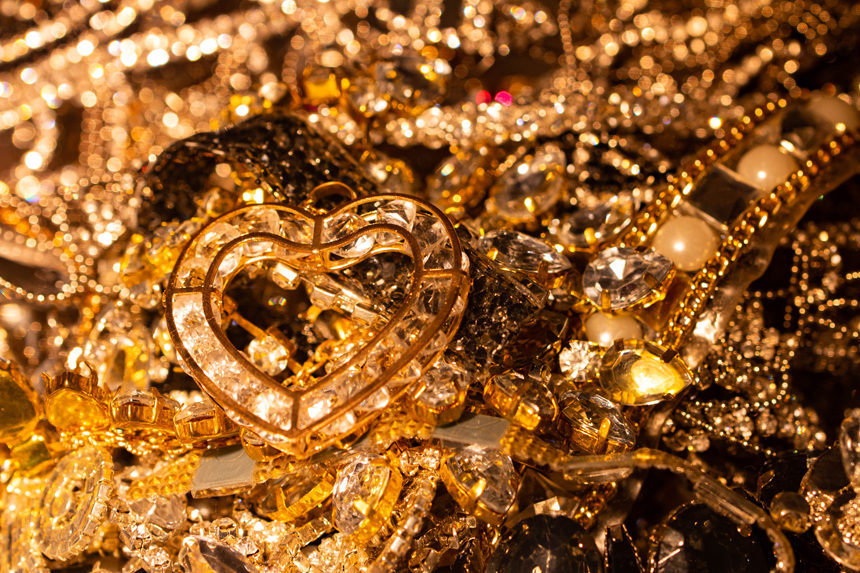Managing editor and logophile Andy Hollandbeck reveals the sometimes surprising roots of common English words and phrases. Remember: Etymology tells us where a word comes from, but not what it means today.
In the Mediterranean and Middle East grows the carob tree, whose seeds are formed inside hanging pods. From a certain angle, these pods look like little horns. In ancient Greece, the word for an animal’s horn was keras, so they called the seeds that came out of these “horns” keration, literally “little horn.”
One notable aspect of the carob seed is that, from tree to tree, the weight of the seed is quite consistent. Because of that consistency, carob seeds became a standard tool in the ancient world for weighing small quantities — like, for example, small gemstones. The practice became so common that the word keration took on the second meaning of “a small weight.”
From the Greek root, Arabic traders called carob pods qirat and spread the concept and the word further. In Medieval Latin, one of these “little weights” was called a carratus; in Italian, carato; and in Old French, carat — the form that, in the late 15th century, found its way into the English language.
Today, gemstone weight is still measured in carats, though the actual seeds aren’t used so much anymore. The carat was standardized at 200 milligrams, or one-fifth of a gram, in 1907. But long before that standardization, carat took another turn.
Back in the early 4th century, Constantine the Great introduced a new gold coin called the solidus. By that time, coin-making had improved to the point that the weight of these coins, which were cast from relatively pure gold, could be maintained fairly consistently. These solidus coins weighed 4.5 grams or, measured in the carat weight of the time (about 190 mg), 24 carats.
Thus the carat came to be associated with gold, and specifically with 1/24 of a specific gold coin — and more generally as just a 1/24 portion. But this was still a measure of weight: 1 carat = 1/24 solidus (the coin, like the carob seed, also gave its name to a unit of measure). But because the solidus coin was considered pure gold, it and its 24 carats became a good comparison tool to express levels of gold purity.
A piece of pure gold, then, became 24-carat gold. Because gold is a soft metal, it’s often mixed with other metals to create a stronger alloy for jewelry. A common purity level in modern gold jewelry is 14-carat gold, which means that the alloy is 14 parts pure gold and 10 parts other metals.
The carat as a gold purity standard actually made it into the English language before the older weight measurement — in the late 1400s, about a century before the gemstone measurement. It makes a certain sense, though: Diamonds are quite rare in Britain, but gold has been mined in Wales since the time of the Roman occupation, so a gold purity standard would be more useful and necessary.
Which leaves us with one final anomaly: karat with a k. That’s a purely American invention. In most of the world, the carat is used for both gold purity and gemstone weight, but American jewelers — since the mid-1850s — use the alternate spelling karat as the unit of measure for gold purity.
If you have a hard time remembering which is which, remember “The Four C’s” — a concept you’ve probably heard if you’ve ever shopped for a diamond ring. Developed in the 1940s by Robert Shipley, founder of the Gemological Institute of America, The Four Cs gave jewelers and customers alike a way to talk about the quality of a diamond or other gemstone. The Four Cs are cut, clarity, color, and — most important here — carat weight. If you can remember that it isn’t “The Three Cs and One K,” you can remember that carat is a measure of gemstone weight and karat indicates gold purity.
Become a Saturday Evening Post member and enjoy unlimited access. Subscribe now




Comments
This is a fascinating story and journey of ‘karat’ in reference to gold going back centuries, as most words featured each week here do. I’m trying to, somehow, get some real gold as the dollar continues to become more worthless all the time.
I love the opening picture here, Andy. As for diamonds, I’m not afraid to say they can be a guy’s best friend too. Getting my hands on some of those would be wonderful, but naturally must be pursued with much caution.